So what are dendrites and how are they formed? 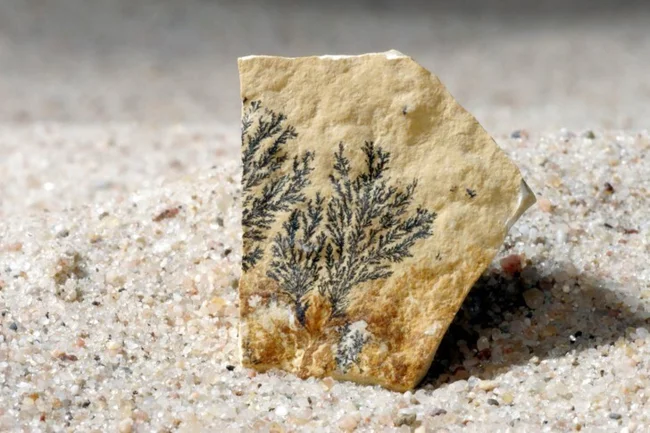
Quite often, tourists find “imprints” of plants on limestone, granite, slate or other rocks and minerals, forming spectacular pictures and patterns that rival the beauty and precision of lines with works of embroidery, or even the best examples of graphics. But the feeling of admiration is replaced by surprise, mixed with disappointment, when experts, looking at the revealed miracle, dryly say: “These are not plant imprints at all, but dendrites.” However, a good sample with a dendrite is not a reason for disappointment. After all, such creations of nature adorn both home collections and the best museum collections. Even the great scientist Mikhail Vasilyevich Lomonosov admired the patterned formations, so it’s not a sin for us either. 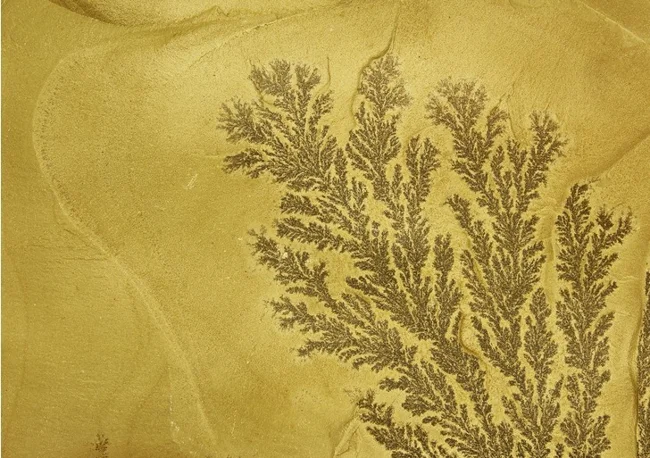
So what are dendrites and how are they formed? Modern science defines them as “complex crystalline formations with a tree-like branching structure”, “mineral aggregates of a tree-like form”. They form in cracks in rocks or in viscous, not yet hardened substances. This is how native copper crystallizes, which bends around turns and obstacles in cracks. The same thing happens with manganese dioxide (pyrolusite), when it splits into many separate branches in cramped conditions and with temperature changes during growth. Moreover, growth occurs in the direction of the feeding solution. It seems that the crystal, like a tree, reaches out to the source of energy, adapts to conditions, and bends around obstacles. Such observations in the 18th century served as fertile ground for scientists to think about the similarities between the plant and mineral worlds. 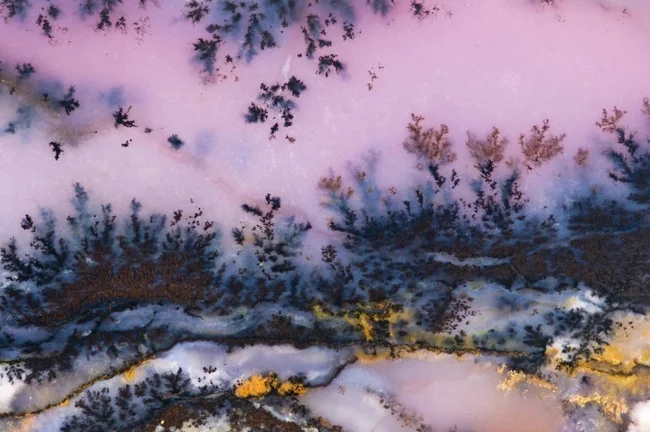
Two-dimensional dendrites grow in cracks in rocks. They are often confused with plant imprints. And how can an unprepared person avoid confusion when stems, shoots, leaves, and needles are clearly visible in front of him?
The most reliable way not to succumb to deception is to take a close look at the find. Veins are usually visible on the leaves. They supply the leaf with water and salts, thereby performing a function comparable to the human circulatory system. The venation can be reticulate, arcuate, parallel, pinnate, peri-petiform, palmate-branched and fan-shaped. Dendrites have nothing like this. But it is worth recognizing that individual instances of dendrites can mislead even people interested in science. These are the famous moss agates. The dendrites in them are incredibly similar to the thalli of mosses or algae. Their appearance is explained simply: the molten substance was once viscous, like jelly, which created the conditions for the growth of dendrites.
Three-dimensional dendrites grow in rock voids. These include extremely spectacular examples of native gold, silver, and copper, similar to branching corals. 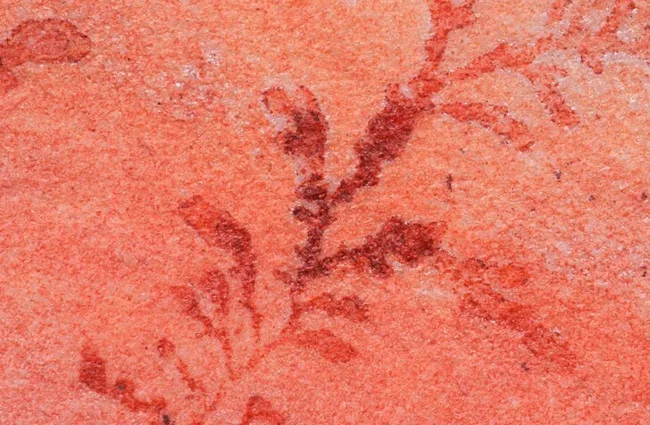
In addition, dendrites are formed in metal melts. If melts cool for a long time, large dendrites appear in them. If they cool quickly, they turn out small. The largest dendrite obtained as a result of melting reaches 39 centimeters in height and weighs almost 3.5 kilograms. It was named in honor of the outstanding scientist, metallurgist, one of the founders of metallography, Dmitry Konstantinovich Chernov.
However, to see dendrites, you don't have to go on a hike, explore rock outcrops, hit them with a heavy geological hammer, or visit a smelter. Sometimes you just have to wait until winter. 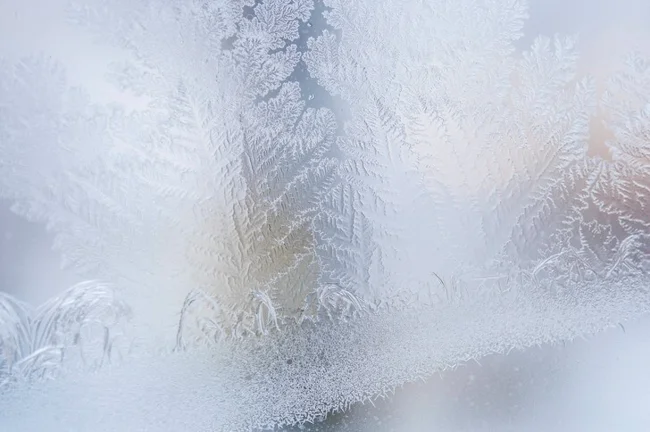
When frost sets in, beautiful patterns appear on the windows. These are also dendrites! They grow at high humidity, when the cooling of the glass surface begins even at positive temperatures. When water coats the glass with a thin film, it begins to crystallize and form dendrites when it freezes. In this case, the centers of crystallization are microcracks and all kinds of glass defects, which we often do not pay attention to. It is interesting that the dendrites are larger at the bottom, since water flows down under the influence of gravity, but in the upper part of the stele there is less of it, which means the dendrites are more elegant.
True, residents of houses with modern double-glazed windows often find themselves deprived of the pleasure of watching in their apartment how frost and water, without anyone’s intervention, design or inspiration, create intricate drawings. Well, there is a reason to walk around your hometown or go to the village to visit your grandmother.
0 comments
